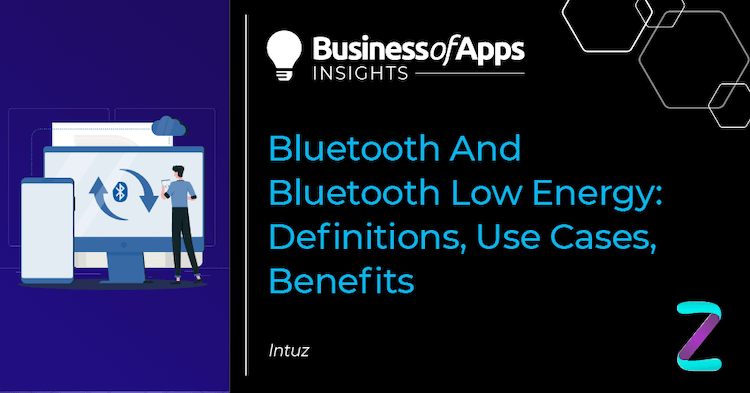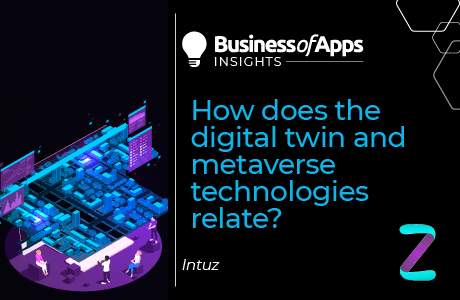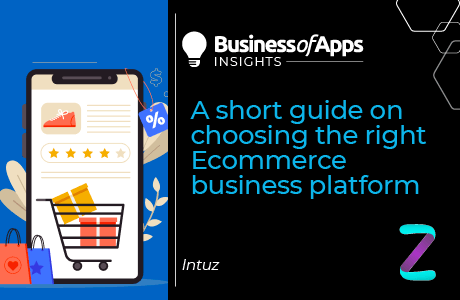
We live in a day and age where data sharing through wires and without them is a rather common phenomenon.
From offering location services (asset tracking) and audio streaming (in-car speakers) to maintaining device networks (monitoring systems) and data transfers (wellness monitors and fitness trackers), all is made possible due to communication technologies.
One such technology is Bluetooth. A short-range wireless technology, Bluetooth helps exchange data between mobile and connected devices over short radiuses. It was initially created to replace wires in devices such as a mouse, keyboard, or personal digital assistant.
A sneak peek into its history
The first version of Bluetooth technology was released in 1994 by Ericsson and named after King Harald “Bluetooth” Gormsson, who helped unify warring factions back when he ruled over Denmark during the 10th century.
Although the first mobile phone with Bluetooth appeared in the market in 2000, it did not pick up pace until 2004 with the introduction of EDR (Enhanced Data Rate).
The changing faces of Bluetooth
Even though customers were delighted with minor revisions and enhancements in the technology, it was not until 2014 that Bluetooth launched a new feature called Bluetooth Low Energy to meet the rising demand for wireless communications across small devices.
Short for BLE, it is a wireless technology that allows devices to communicate without much power. BLE operates in the 2.4 GHz ISM band and could benefit applications that need less power consumption.
This means that the battery life of a BLE-based device can last for months or even years since it does not need as much charge compared to Bluetooth and other wireless technologies.
How Bluetooth fares in the world market
Bluetooth is better in power supply, connectivity range, and communication among mobile devices. The global BLE market is projected to grow at an estimated CAGR of almost 19.68% during the forecast period 2021-2026.
BLE has recently been added as part of V4.0’s suite and allows for better asset tracking. The specialty of the BLE protocol is its low power consumption. The devices integrated into the network consume minimal amounts of power.
Use cases of Bluetooth: examples to wonder
Leading applications of Bluetooth, including Bluetooth 5 vs. 4, include proximity marketing and smart tags. It is essential for IoT networks due to their ability to conserve battery power on devices. Major use cases of BLE and Bluetooth technology include:
- Mobile payments for friction-less checkout at retail outlets
- Charging multiple devices by transferring energy up to 5 centimeters
- Smart Tags at airports to keep track of traveler luggage and belongings
- Custom retail shopping experiences by connecting in-store and online shopping
- Smart Agriculture uses BLE-powered sensors and robotic equipment to improve yield.
- Remote monitoring of patients suffering from chronic heart diseases or other ailments
- Smart cities connected through LPWAN (Low Power Wide Area for intelligent lighting and emergency services.
- Real-time connectivity for manufacturing and industrial uses; assistance in improving quality, predicting maintenance, and utilizing ERP systems optimally.
- Autonomous vehicles with intelligent seats and steering wheels, remote keyless entry [RKE] systems, infotainment systems, and intelligent proximity reporting
- Home automation systems with sensors for tracking water leakages, fire breakouts, and motion in case of burglary
How BLE is different from Bluetooth Classic
Both the versions are two very different technologies serving different purposes, so there is no doubt about that. While Bluetooth can handle a lot of data, it uses up battery life quickly and costs more. BLE is used in IoT app development, where the apps do not need large amounts of data transfer at once because they run on power through the years.
The central, peripheral relationship in BLE
A BLE device is typically only able to interact with one central device at a time. The most common behavior is that when the connection between two devices is established, it stops advertising as both peripheral and central.
The relationship between a BLE central and peripheral like that of a client-server can help understand how it works. A server (peripheral) hosts a GATT (Generic Attribute Profile) database, which provides information for clients who access them via BLE technology on Android devices.
An introduction to BLE API and its architecture
Android devices are becoming more interactive with the introduction of BLE. It offers built-in platform support for BLE and APIs that apps can use to discover nearby Bluetooth smart devices. These APIs help devices communicate wirelessly over short distances without having any physical connection or being tethered by cords.
The BLE architecture comprises the following layers:
- The Physical Layer of communications refers to the radio, which emits signals used for modulating and demodulating data. These operate at 2.4 GHz spectrum in the ISM (Industrial Scientific and Medical) band.
- The Link Layer is BLE architecture’s most important component. It interfaces with Physical Radio and provides a higher level of abstraction to interact wirelessly through an intermediary called HCI. The job for this layer would appear to be managing state and adhering to time requirements set out by BT’s specifications.
- Direct Test Mode is helpful to test the radio at its physical level. This mode is designed for checking how well your transmission power and receiver sensitivity work together. Testing can be performed by setting up an environment as required for live transmissions or receiving sensitive intelligence. The setup can be tested for noise, transmission power, and receiver sensitivity.
- The HCI layer is a standard protocol defined by the specification that allows devices to communicate through the host and controller layers. These two layers could exist on different devices, allowing them to communicate.
- Logical Link Control and Adaptation Protocol (L2CAP) is a layer two protocol that multiplexes information from different upper layers. It packages them into standardized BLE packets for transmission across the network.
Defining Bluetooth beacons
A Bluetooth beacon is a small stationary wireless device that runs on BLE. It broadcasts a radio signal, which can be numbers or letters transmitted at short intervals to specific devices nearby (like smartphones).
A receiving device is required to capture the broadcast signals as it acts as an identification card for the beacons. Typical uses of Bluetooth beacons are:
- Room-level monitoring for improving office space utilization and employee productivity
- Decrease carbon footprint by monitoring temperature, air quality, humidity, and motion to control emissions
- Enhance security by streamlining and tracking visitors in real-time through visitor flow management systems
- Seamless navigation in buildings to improve orientation or across cities to streamline traffic
Bluetooth advantages to remember
- Constantly sends an ID number via BLE channels
- The 2.4 GHz frequency prevents interference in signals.
- Senses location of specified users or all users within its range
- Long standby time by keeping the radio off when not in need
- Uninterrupted broadcast through Bluetooth beacon for constant coverage
- The devices are capable of establishing connections and transferring data quickly.
- Small size (maximum up to 255 bytes) data transfer is helpful for IoT-based applications
- The 128-bit AES algorithm ensures the safety of data communicated between master and slave devices.
- Lower cost of deployment and maintenance of modules and chipsets as they are built to perform in extreme conditions
- Low power consumption compared to other technologies and can be controlled further by sending small amounts of data
Bluetooth disadvantages to factor in
- Users must be in proximity of the Bluetooth beacon.
- The short-wave wireless technology quickly impacted by surroundings
- Due to its wireless transmission and reception, it is vulnerable to hacks.
- Limited coverage as it supports only up to 200 meters in LOS (Line of Sight)
- Limited transmission distance and suitable only for 1 Mbps/ 2 Mbps data rates
Over to you
We have barely scratched the surface in terms of what Bluetooth technology has to offer. When Apple first launched the headphone Jack eons ago, they deployed this communication protocol as the new audio standard. Since then, Bluetooth has evolved by leaps and bounds and will continue to do so in the future.











